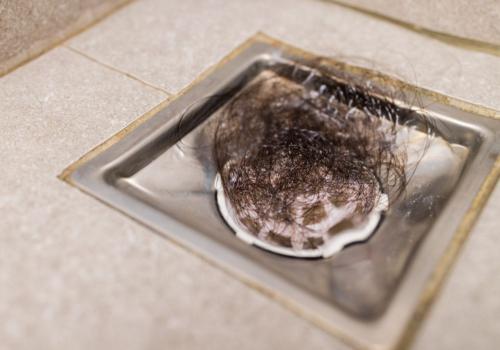Dealing With Annoying Hair Clogs in Drains and Pipes

It starts with a few strands circling the sink
or tub. Before you know it, water is draining slower and slower until one day
the sink is completely clogged up, full of dirty standing water. Hair clogs are
one of the most common and pesky plumbing issues homeowners deal with. Learn
what causes hair blockages, the damage they create if ignored, and how to
properly remove hair accumulation for problem-free drainage.
What Causes Hair to Clog in Drains?
We shed between 50-150 strands of hair every
day. Over time, all this hair released in bathrooms accumulates into wads and
winding nests that stick to soap residue, oils and greases on pipe walls. Hair
is extremely thin and flexible, which allows it to easily wash down drains but
then tangle into dense masses that catch other debris floating by. Snaking
cables and chemical drain cleaners can temporarily shift a hair clog deeper
into the plumbing system but they rarely dissolve or fully remove the mass of
hair. This is why hair clogs often reappear quickly even after attempts to
clear them.
Problems Hair Clogs Create
A minor buildup of hair in bathroom drain
pipes may not immediately disrupt water flow. But ignorance will allow the
hairy mass to rapidly expand until it plugs up the pipe. Clogged drains are
more than just a nuisance - standing water filled with soap scum, oils and
debris creates:
●
Breeding grounds for dangerous
mold and bacteria
●
Foul sewage odors wafting through
bathrooms
●
Leaking pipes due to backed up
water pressure
●
Flooding as water finds
alternative escape routes
●
Permanent pipe corrosion and damag
●
Costly plumbing repairs, from
snaking to full drain replacement
Hair clogs also overload and burn out sump
pumps in basements with floor drains. The stagnant water they hold rusts metal
components and erodes PVC and ABS plastic pipes. Tree root infiltration
exploiting cracks and gaps in damaged drain lines compound clog issues. Trying
to treat recurring drain clogs using harsh chemical cleaners actually
accelerates corrosion of plumbing inside homes.
Safely Unclogging Hair Blockages
Pouring caustic chemical cleaners down home drains or snaking cables in hopes of clearing a hair mass leads to damaged plumbing systems. The DIY methods most homeowners attempt provide temporary relief at best. For lasting hair clog removal, hire a professional plumber as they use specialized hydro jetting equipment for drain cleaning.
High pressure water jet nozzles blast away all
obstructions, push through tough hair wads and dissolve all traces of soap scum
walls lining pipes. Professional hydro jetting flushes systems multiple times
thoroughly with clean water. It is the only way to fully restore drain flow and
remove every strand of hair in pipes without ruining them in the process.
Camera pipe inspections ensure no debris is left behind after hydro jetting.
Any damaged sections of pipes get repaired or replaced at the same time.
Preventing Future Hair Clogs
No matter how thoroughly professional plumbers clear hair from drain pipes, new shedding restarts the clogging process eventually. That means adopting new habits is critical to avoid recurring issues between professional drain cleaning maintenance visits. Installing hair catchers and strainers is a quick, inexpensive plumbing upgrade. Mesh or perforated metal baskets over tub and sink drains trap loose strands before they disappear down the drain. Just pull out catchers periodically to dispose of accumulated hair in trash cans.
Using less oils, conditioners and thick
shampoos minimizes residue buildup on pipe walls that hair binds to. Any crud
lining pipes gets removed with each hydro jetting session. Take shorter showers
and brush hair before washing to capture shedding. Remember, whatever goes down
a drain adds to future obstructions - so don't treat toilets or garbages
disposals like trash cans. Adopting these best practices extends the hair and
clog-free performance benefits professional drain cleaning provides.
When Hair Clogs Call for Professional Assistance
While occasional use of drain openers sold in
stores may seem convenient for minor clogs, relying on DIY methods too often
causes deteriorated pipes needing replacement. Don't wait until serious
plumbing disasters and costly repairs for a professional perspective on
maintaining optimal drainage performance. Schedule inspections immediately if
water starts backing up or you deal with perpetually sluggish drains. Reach
out for professional assistance as soon as a problem is detected for
pipes cleared rapidly with minimal damage by experts.





Comments